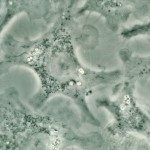Lien vers Pubmed [PMID] – 12803883
J. Endotoxin Res. 2003;9(2):101-7
Beeson (1946) first defined endotoxin tolerance as a reduced endotoxin-induced fever following repeated injections of typhoid vaccine. Freudenberg and Galanos (1988) demonstrated that endotoxin tolerance that can protect against a lethal challenge of lipopolysaccharide (LPS) involves the participation of macrophages. Evans and Zuckerman (1991) reported a role for glucocorticoids in endotoxin tolerance. Prostaglandins, interleukin-(IL-)10, and transforming growth factor-beta are other players of in vivo endotoxin tolerance. Dramatic reduction of plasma tumor necrosis factor (TNF) (Mathison et al. 1990) and other cytokines in response to LPS parallels endotoxin tolerance. The reduced capacity to produce TNF and other cytokines can be mimicked in vitro by pretreatment of monocytes or macrophages with LPS. It is not a specific phenomenon and can be induced by other agents or events. Cross-tolerance between LPS, TLR2 specific ligands, IL-1 and TNF has been regularly reported. A similar loss of LPS-reactivity has been repeatedly reported in leukocytes of septic patients and in patients with non-infectious systemic inflammation response syndrome (SIRS; e.g. surgery, trauma, cardiac arrest and resuscitation, etc.). Studies on cellular signaling within leukocytes from septic and SIRS patients reveal numerous alterations of the activation pathways reminiscent of those observed in endotoxin-tolerant cells. While endotoxin tolerance prevents severity of infections and ischemia-reperfusion damage, it has been suggested that the immune dysregulation observed in SIRS patients was associated with an enhanced sensitivity to nosocomial infections. In conclusion, in vitro and in vivo endotoxin tolerance, either experimental or due to clinical status, are similar but not identical.

